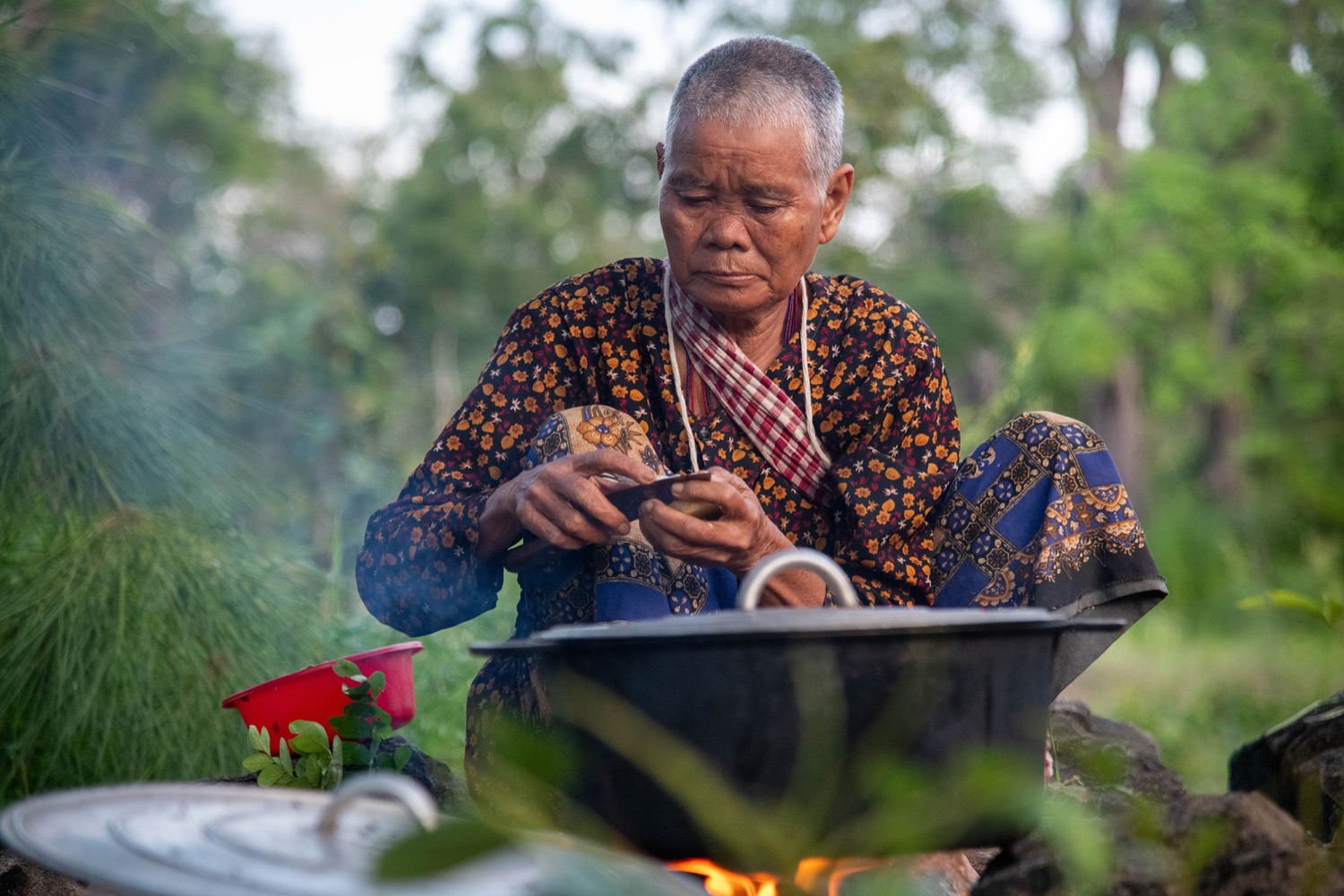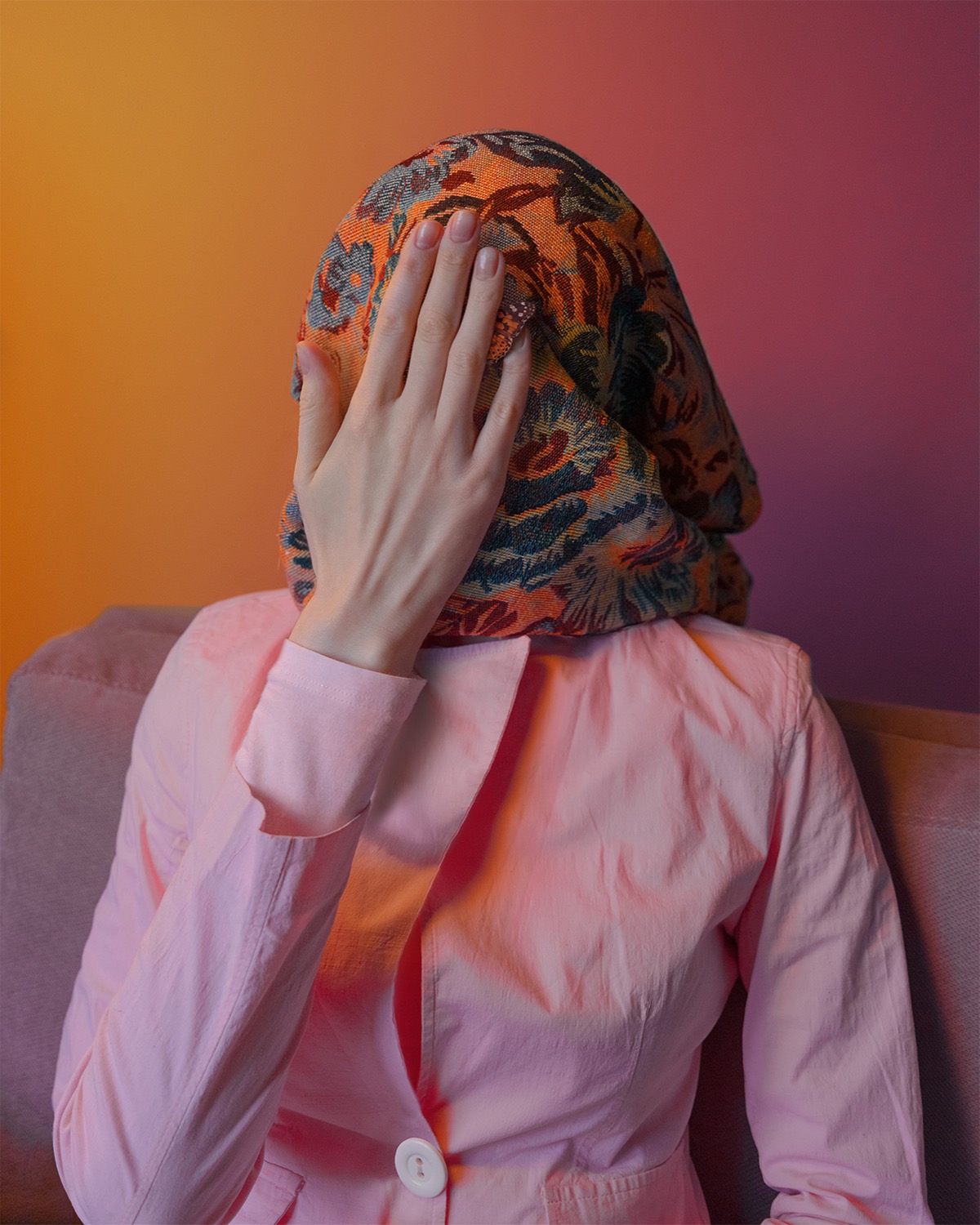
A Spy In His Homeland
Ihar Hancharuk
Belarusian photographer plays the spy role in his homeland
Artdoc

“Alexander Lukashenko is under pressure like never before,” is the first line of a recent article on the presidential election of the relatively unknown, landlocked country Belarus in The Guardian. Europe's last dictator, as Lukashenko is labelled, miraculously won the elections again. It could be the reason why the Belarusian photographer Ihar Hancharuk felt like a spy in his own country. On the diptychs of his project about his own country Belarus, we see binoculars combined with a starry sky, decorative flags combined with a hand full of flashcards, passports in a jacket combined with a window in a bunker. The images form a series of secretive and suspicious objects. What is going on here? The title What if I am a spy? directs us to an answer. Ihar Hancharuk created this project when he returned to Belarus after having lived abroad. When he started to photograph his motherland, locals were under the impression he was a spy. A country that feels weak starts to mistrust its own citizens, especially photographers who seemingly appear out of nowhere.

Before starting his career as a professional photographer, Ihar Hancharuk lived in many different countries outside Belarus. He studied Philology in Poland and Germany, and after that, he studied photography in Saint Petersburg, Russia. “I started to look for a photography school, and I found one in St. Petersburg, which was much cheaper than the photography schools in Europe at the time. So, I moved to Saint Petersburg and started to study at the School of Modern Photography, called Docdocdoc. It was an excellent school, one of the best in Russia. Unfortunately, we don't have any photography schools of that level in Belarus. At the school you can do one-year of documentary photography, then if you like, you may proceed and study post documentary photography again the next year. And there is even a course in experimental photography. I took a year of documentary and a year of post documentary photography.” Hereafter he returned to Belarus to find out that photography was an alien thing to practise there.
Payment Failed

Life in Belarus
As a result of his years abroad, Hancharuk photographed his own country with the curiosity of an outsider. “The years spent abroad in Russia and Europe helped me in the way, that I saw that not many people know anything about Belarus. So that was the point I turned my focus to Belarus to promote it in the world. I looked at Belarusians from the outside.”
How modern or backward is Belarus in relation to Europe? “I would say that we have the same iPhones as you do. Technology came here just a bit later and in smaller increments. The main problem is our political situation. It drags us backwards. We are still in the USSR in many aspects. The government doesn't want its people to develop; they just want to maintain power and stay wealthy. Their idea of power dates from the last century. It's a dictatorship. In fact, we don't have a real government, because it is absolutely manipulated and suppressed by the president. At the same time, the president is very dependent on Russia, but he hopes to keep his power. He will never let Belarus become part of Russia because that would imply his loss of power. But if he turns towards Europe, Russia will destroy him and Belarus will probably turn into Crimea-2. If he goes east, he will lose his power and end up being nothing. That's his biggest dilemma: that he is doomed between two powers.”

The Spy
The project What if I am a spy? is a fictional story, but it is documentary all the same. How did Hancharuk come to make this story? “I came back from Poland to Belarus, and I wanted to make a project about Belarusians, investigating our national identity. I had no idea what that was. So, I just strolled out onto the streets and took some street photography, with no aim, no purpose and no idea what I was doing. During these strolls, I heard people ask these questions: Are you a spy or what? Why are you taking pictures? Who allowed you to take pictures? The remarks of the locals were not making much sense, because my pictures were nothing that could be of any interest to a real spy. Finally, I thought: Ok, what if I AM a spy? I decided to continue my work and take pictures playing the role of a spy. Later I realized that I had objects in my home that in some situations could really belong to a spy. For example, I had a drone, flash memory cards and binoculars. And I had two passports, a Polish and a Belarusian. So, in my project, I combined these two stories, the reality and the fictional story. The series became like a question to myself: What if I am a spy? You get suspicious of yourself. You are going to imagine that it could be possible and then eventually you start to behave as such.”
Hancharuk took all the pictures in smaller towns all over Belarus, where a person with a professional camera is apparently suspicious. “I interpret this suspicion as a result of modern Belarusian propaganda. They try to blame internal problems on people from the outside of the country. There are many books and movies about spies and their intentions to destroy our happy country.” The fact that Hancharuk talked Belarusian added to people’s suspicion because most people only speak Russian, as the Belarusian language is suppressed, although it technically remains as one of the two official languages.

Diptychs
The photographs in the series What if I am a spy? are diptychs, combining two different realities. Sometimes one of the photos is in black and white, while the other is in colour. In one of the diptychs, we see a colour photo of a statue of Lenin in a neat park with yellow flowers, while on the right side there is a black and white photo of an obsolete playground, that could be a ‘lieu de crime’.

What is the meaning of the juxtaposition of colour and black and white here? “The black and white pictures are from unimportant places. I wanted to give the impression that this picture was taken by a spy who checks a suspicious place. You get the mysterious feeling that something happened there, but it was an ordinary playground somewhere in the middle of a city. It was my response to those people who were suspecting me being a spy. I took this ordinary place and turned it into a crime scene, playing with the meaning of black and white.”

In another diptych, you see on the left side a black and white picture of a metal cross in the field. On the right side, there is a colour photo of a wall from the town hall where marriages are being held. Hancharuk: “The cross is not from a grave. We have such crosses put on the edge of the cities, with no cemetery or church around. The cross picture was taken in Maladechna, a small town in Belarus, were used to be a concentration camp. I do remember this eerie feeling that came to me. There is now a monument on the spot where the concentration camp was. Maybe I was under the impression, and that's why I took this picture of this cross. It's a sort of intuitive association. The pigeons on the wall of the colour photo symbolise peace. So, we see peace and death.”

Chernobyl
Ihar Hancharuk is now working on several other projects in Belarus among which one is his project on Chernobyl. “Even though it is a national trauma, there are not many projects concerning Chernobyl by Belarusians. That is a shame because Belarus was affected by this disaster more than any other country. I want to show how the official attitude to this catastrophe changes with the times. A few years after the catastrophe, Belarus declared itself a nuclear power free country. We gave all our nuclear missiles to Russia. We used to have large abandoned territories, excluded from agriculture because they were contaminated – but after more than thirty years – Belarus needs the resources of the lands and forests. We now breed cows there and produce milk that was produced by cows that ate contaminated grass. We also produce wood from those contaminated territories. Moreover, we’ve almost finished our own nuclear plant. The irony is that it was sponsored and built by Russia, making Belarus even more dependent on Russia. So, we can't really proclaim that we are a nuclear-free country anymore. I will take this insight into my project.”
Doc and art
What, according to Ihar Hancharuk, is the relation of documentary photography to fiction and art photography? “I could say that after studying the Post Documentary Photography Course at the Docdocdoc school, I realized that this way of dealing with photography resonates with me much more closely. I like to show real things about real life in a very unusual way. Pure documentary photography is much closer to photojournalism, and that is not the thing I want to do. But I'm interested in social and political issues. I feel that I'm turning to art photography in this regard.”
Ihar Hancharuk is a documentary photographer and visual storyteller. Born in Baranavichy, Belarus in 1986. Works with documentary and art photography, video and archive. Focuses on personal projects which deal with the themes of national identity, collective memory, global contemporary issues and impact of the mass media on the world. The choice of these themes arises from his multilingualism and the experience of living in different countries for several years.
2020 CitiesToBe Photo Award shortlist
2019 College Photographer of the Year, bronze in the Domestic Picture Story category
2018 Nominee of International Photography Grant
Currently based in Belarus
www.ihancharuk.com
.svg)
.svg)
.svg)







